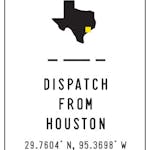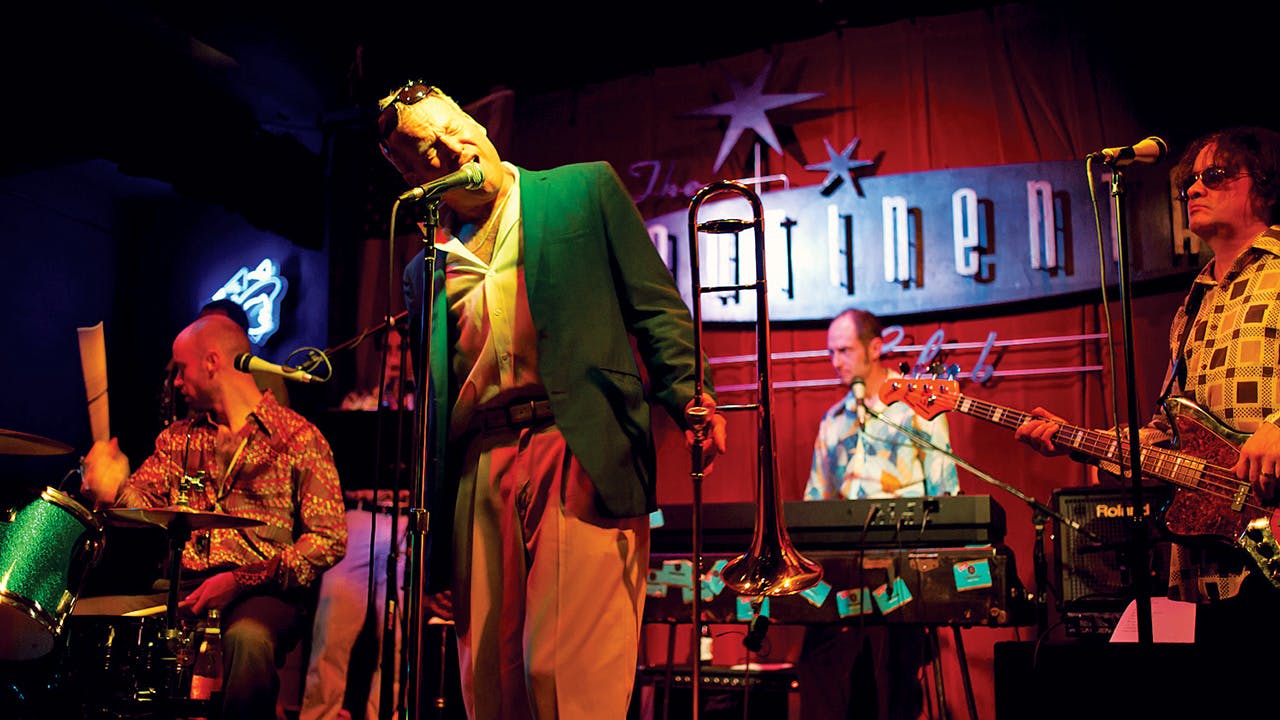 Early in March, when the Houston azaleas were riotously blooming and the sky was a brilliant spring blue, Billy Cohn had a fretful moment. It was fleeting, of course, because in the zero-to-sixty-in-three-seconds velocity of his life, that was all he had time for. The 56-year-old heart surgeon turned medical device inventor (ninety U.S. patents granted or pending, sixty international!) turned entrepreneur (started six companies!) turned corporate innovation guru (catch his TEDMED talk!) had, over several recent days, attended to his usual businesses while also showing up at a board meeting of the 21st Century Cardiothoracic Surgical Society, in Puerto Rico, and the Design to Value Summit, in New Jersey. A few weeks earlier, he had briefly stolen the show from Mehmet Oz by performing magic tricks during a lull in Oz’s CPR presentation at the Houston Health Museum. In the days ahead, Cohn would work with an international team on a years-long project to perfect an artificial heart—they were going to implant a new version in a calf—and, in his so-called downtime, play a few music gigs, including some at South by Southwest with Chicago soul singer Renaldo Domino. (Cohn plays trombone. And bass guitar.)
Early in March, when the Houston azaleas were riotously blooming and the sky was a brilliant spring blue, Billy Cohn had a fretful moment. It was fleeting, of course, because in the zero-to-sixty-in-three-seconds velocity of his life, that was all he had time for. The 56-year-old heart surgeon turned medical device inventor (ninety U.S. patents granted or pending, sixty international!) turned entrepreneur (started six companies!) turned corporate innovation guru (catch his TEDMED talk!) had, over several recent days, attended to his usual businesses while also showing up at a board meeting of the 21st Century Cardiothoracic Surgical Society, in Puerto Rico, and the Design to Value Summit, in New Jersey. A few weeks earlier, he had briefly stolen the show from Mehmet Oz by performing magic tricks during a lull in Oz’s CPR presentation at the Houston Health Museum. In the days ahead, Cohn would work with an international team on a years-long project to perfect an artificial heart—they were going to implant a new version in a calf—and, in his so-called downtime, play a few music gigs, including some at South by Southwest with Chicago soul singer Renaldo Domino. (Cohn plays trombone. And bass guitar.)
Just that morning, Cohn had put an aortic heart valve in a human patient at Baylor St. Luke’s Medical Center before showing up fashionably late for a photo shoot; his smiling image was needed to promote an entirely new venture in Houston. The corporate monolith Johnson & Johnson was opening, in a repurposed Nabisco cookie factory, the Center of Device Innovation (CDI), a design hub for new products that would, per the company’s press release, transform health care around the country and the world. The center represented a hefty bet on the medical device industry, and Cohn was to be its designated chief starting in July.
Not that Cohn was giving up his (other) day jobs, as a professor of surgery at Baylor College of Medicine or as an adjunct professor of bioengineering at Rice University and the University of Houston. His eyes were a little red-rimmed from lack of sleep, but he looked like a man at the top of his game. Fit, tanned, and paunchless, he had an aura of middle-aged hipness thanks to a silver widow’s peak and longish sideburns. Cohn’s lab coat, sea-green scrubs, and cowboy boots ensemble was a spiffy nod to Texas-heart-surgeon style. Still: “I’m a little freaked out,” Cohn confessed, whirling around to push open a door with his backside. There was a lot at stake with Johnson & Johnson’s first foray into the medical device business in his hometown, and he was not so thrilled with the pressure. “Expectations are high.”
Most people are unaware of the medical-device industry until they need a medical device. The products can range from the mundane to the almost incomprehensibly complex—a better bandage or pair of scissors or tongue depressor, new artificial hips and knees, heart valves, pacemakers, catheters of all kinds, dialysis machines, even an artificial heart. The golden age of medical device innovation took place from the fifties to the seventies, dovetailing with the space program and the enthusiastic government support of science and medicine, the last of which happened in large part because of Houston heart surgeon Michael DeBakey’s relentless demands for government funding to improve the health of all Americans.
Houston played a big part in the progress: DeBakey made himself a medical ambassador to the world while he was at Baylor College of Medicine. His protégé turned nemesis, Denton Cooley, became one of the most famous heart surgeons on the planet not only because of the speed and accuracy with which he operated but also because of his ability to create the tools that he needed, from a better scalpel to a precursor of the heart-lung machine. Early in his career, Cooley was a regular at Houston hardware and kitchen supply stores, picking out implements and modifying and adapting until he had what he needed.

The business since that time has become far more technological and progress more incremental. Many advances involve small changes in existing products, which improve quality of care or bring down costs by shortening hospital stays but don’t exactly change the world and don’t make that much money. So for investors, the prospects can be risky. As government funding has become far less generous, venture capitalists have moved in, and though they have the millions required to get big projects going, their desire for equally big—and speedy—returns can leave a slow-moving project abandoned on the junk heap. It’s a high-risk, high-return business for just about everyone involved: inventors, investors, and, finally, patients, who may or may not benefit from a new device. (See the troubled history of IUDs, for example.)
This helps to explain why the biggest backers of medical technology are now corporations, with Johnson & Johnson being the second-largest player, with $25.1 billion in device revenues. (Medtronic is first, with $28.8 billion.) Over the past decade or so, more-conventional companies have followed the example of the tech industry by investing in their own innovation centers, which serve as both PR vehicles and as incubators for the next big thing. Johnson & Johnson, for instance, has set up eight so-called JLABS to speed up—“accelerate” is the buzzword—medical innovations, mostly for drugs. Also following the tech industry, they have located these centers primarily on the East and West coasts.
Enter Houston again—sort of. Even though the city is home to the world’s largest medical center, and despite its reputation as a hive of innovation, its leadership role in health care was not a given; it has often been known more for competition than collaboration (the decades-long feud between Cooley and DeBakey being a prime example). Then, too, the city’s super-rich are more comfortable investing in oil and gas technology than in medicine. All this started to change in 2012, when a Mississippi-born heart surgeon named Robert C. Robbins was hired to run the Texas Medical Center and drag it into the twenty-first century. Robbins set about changing the place, making plans for a new campus—adding 28 more acres to its existing 1,345—and developing corporate and university partnerships. The TMC received about ten million patient visits a year, Robbins pointed out, and those patients might want access to new drugs and technologies and clinical trials. So why not stop the squabbling and offer it to them? Given the choice between bad-mouthing competing doctors and hospitals or reburnishing Houston’s reputation as an entrepreneurial capital—to make even more money—the answer was obvious.
Hence the presence of Johnson & Johnson. Already connected to the TMC, the company wanted to grow its medical-device business, but it needed a new approach. The only problem: there didn’t seem to be the right person to head up such an initiative. Then Bruce Rosengard, the company’s chief science and medical technology officer, found himself on the same flight as Billy Cohn. The two had known each other for decades, and they were headed to the same medical conference in Israel; almost immediately, Rosengard realized that Cohn, an operator in the literal and metaphorical sense, was his man. “We are leveraging not only Billy but the TMC,” is the way Rosengard explains his hedge.
Cohn’s decision to give up his full-time career and a master-of-the-universe identity as a heart surgeon was difficult—he fretted about this too—until he came up with an accelerated rationalization: “Instead of going one person at a time in surgery,” he said, “I can help thousands of patients at a time.”
I met Cohn at the former cookie factory, where he led me to another wing where Johnson & Johnson and the Texas Medical Center are already collaborating to develop new health care businesses. In the sky-lit lobby, there was a lecture going on about entrepreneurship. There was also an elaborate spread of hors d’oeuvres for a post-talk confab, and Cohn grabbed a nut-studded cheesecake pop, swallowing it whole, as if he hadn’t eaten for hours, which he probably hadn’t.
Before long, two people cornered him, and Cohn discovered that they had remarkably similar inventions: a better test for stool samples. (“No shit!” said Cohn, genuinely surprised.) As it happens, stool samples are one of the most prevalent diagnostic tests, but they are, well, unpleasant, requiring the use of a tongue depressor, rubber gloves, and lots of plastic cups. Hence, patients aren’t very cooperative and diseases go undiagnosed.
Cohn escorted one of the inventors, a freckled, middle-aged man in a checked shirt and khakis named George Catlin, into a conference room. Catlin whipped out his laptop and made his pitch. He had designed his device to slip around a toilet bowl, with a novel solution for quick and easy collection.
Cohn watched in an almost hyper-focused state. Displaying a superhuman ability to avoid the obvious jokes, he pelted Catlin with questions. “You make a prototype and you poop in it. Is this a company or a real cool product?” he asked. What was Catlin’s market? What were the regulatory issues? Cohn eyed the design and made a suggestion or two: “What if the toilet is shaped like this,”—he made an oval shape with his hands—“instead of this?” Overall, Cohn was impressed, but he thought Catlin could do most of the engineering and marketing himself through his already established contacts with gastroenterologists. He didn’t need the CDI for this. “It doesn’t have to work very well to do better than a toilet hat and a popsicle stick,” he said. Then he was off, glad-handing and mingling, and downing another cheesecake pop.
It was hard to tell that this part of the building had ever been anything but a shrine to the new, what with the brightly hued, vaguely microbiological wall art and bold graphics, in red and white, that from certain angles melded buzzwords like “disruption” with “innovation,” so that they became an even buzzier buzzword, like “disruptivation.” In cubicle after cubicle, room after room, all kinds of health care ideas were being floated. One group was busy inventing a portable vital-signs monitor; another was devising a mental health app for nurses. Another group was developing a vest for helping the deaf, converting sounds into patterns, while still another researched the intersection of neuroscience, crime, and law. Everyone was young or youngish, some from Houston, some from as far as Bangalore. Cohn checked in like a doctor on rounds, encouraging and enthused but always moving on. A tall, pale young woman asked for an extra minute. “Tomorrow!” Cohn sang, already out the door. Then he added, as if he believed it, “I have an emptyish day.”
Cohn’s own path to success as an inventor was not entirely linear. As a boy growing up in Houston’s Memorial suburb, his mother inspired him with stories about DeBakey and Cooley, while his father introduced him to the astronauts training at NASA. He and his brother, John, spent a lot of time teaching themselves to blow things up and mastering the art of swift repartee. (“In our family, you had to be sharp,” John told me.) Cohn eventually headed for Oberlin College with his heart set on being a musician; he fantasized about becoming a rock star. But he never considered music a viable career path, and after a summer job as an orderly at the Woman’s Hospital of Texas, he turned to medicine. He majored in biology and chemistry, aced the MCAT, and got in to Baylor College of Medicine. (Most likely he was the only med student with bleached bangs.)
He loved the pressures of Baylor, the churning patient load at Ben Taub Hospital, and the Napoleonic demands of DeBakey. A fellowship took him to Boston, where he leveraged a year-long position as a surgical associate at the Beth Israel Hospital into a full-time faculty position at Harvard Medical School and a directorship of Minimally Invasive Surgery at the Beth Israel Deaconess Medical Center. But he continued to play in rock bands—and also continued to tinker. Cohn put a metal shop in the basement of the small house he shared with his wife, Mishaun, and their two children (they now have five), and in the tradition of many surgeons, started inventing or improving on things he could use. A machine that could warm blood was first, though it never made it to market. Some years later, Cohn came up with a device that allowed surgeons to perform a coronary bypass, the most common heart surgery, while the heart was still beating in a patient’s chest, which allowed for fewer side effects and a faster recovery. Cohn’s first prototype was a couple of soup spoons from a neighborhood kitchen supply store. For his trouble, he received a patent, as well as a New Yorker profile in 1999, which, in a nod to the MTV generation, was called “Heart Surgery, Unplugged.”
Boston was a fertile environment for a self-styled surgeon innovator, but there was not much going on in artificial heart research, and Cohn had always been fascinated by the work going on in Houston. So when, in 2004, he got the chance to work at the Texas Heart Institute with O. H. Frazier, a world-renowned pioneer in transplants and artificial heart research, Cohn didn’t waste any time packing. He would stay at THI for the next decade or so, during which he produced a near-Herculean number of medical devices. One of the most notable is a catheter that makes dialysis more effective (clinical trials took place in Paraguay and Canada, and the device is now available in Europe). A work in progress is a continuous-flow artificial heart, his longtime project with Frazier. In 2011, for the first time in history, the two implanted a version of their device. The patient was a terminally ill man named Craig Lewis, who lived for about five weeks. They are now working with a team headed by an Australian biomedical engineer named Daniel Timms.
For many people of a certain age, that would be enough. But a week or so after the photo shoot, Cohn was onstage at Houston’s Continental Club as part of the house band backing up Domino, a rehearsal of sorts for SXSW. They went on a little after ten o’clock, to an eager crowd. Domino wore a maroon suit that blended nicely with the burgundy velvet curtains. The band all wore Mad Men–era suits. Except for his turquoise reflector sunglasses, Cohn looked like a boy dressed up in an outfit he had almost outgrown.
In his satiny tenor, Domino launched into some favorites from the sixties and seventies; there were some cheers when he launched into Edwin Starr’s “Twenty-five Miles.” Cohn picked up his trombone and marched in tune, while Domino sang:
I got to walk on,
Oh-ho, oh-ho-ho
I-I-I’m soooo-hooo tired
But I just can’t lose my stride.
And you know what? Billy Cohn never, ever did.
Editor’s note: A previous version of this story misrepresented Cohn’s time in Boston. We regret the error.
- More About:
- Houston









